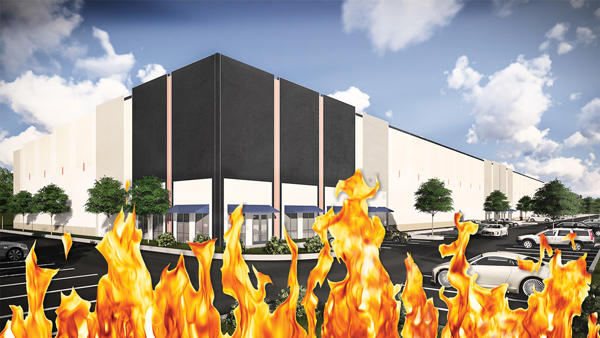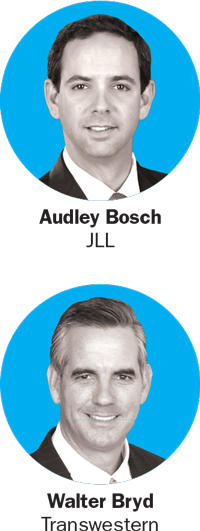Trending
How hot can industrial get?

Industrial properties may not be the sexiest parcels in commercial real estate, but they’re certainly making buyers salivate these days. Increasingly, investors are willing to go to greater and greater lengths to land these properties, outbidding others even when it means accepting lower returns, commercial brokers said.
As land availability continues to shrink and rents continue to rise, brokers are working with a new kind of normal, where bidding wars are not uncommon for industrial space and owners are generally getting the high rents they’re asking. Vacancy remains low in the sector at 3.6 percent across South Florida, according to a 2018 first-quarter report from CBRE.
And developers can’t seem to build industrial inventory fast enough. Spec development is rampant in a market that has rarely before seen large spaces get preleased, with clothing distributors, auto and aircraft parts suppliers and e-commerce giants like Amazon creating a virtual frenzy.
“The amount of speculative development in South Florida is by far the most [it has ever been],” said Audley Bosch of JLL, who said that despite this, he believes supply is on pace with demand.
Before this cycle, tenants were typically seeking between 20,000 square feet and 40,000 square feet. Now many are looking for spaces exceeding 100,000 square feet. The “unprecedented amount of spec development” has been met with “fantastic” absorption, Bosch claimed.
Nearly 7 million square feet of new industrial space is in the pipeline for South Florida, according to JLL. The bulk of space under construction is in Miami-Dade, which has 4.6 million square feet in the pipeline. Broward has about 1.8 million square feet and Palm Beach County has about 200,000 square feet under development, per JLL.
A year ago, only 2.8 million square feet was under construction in South Florida, with the bulk — 2.5 million square feet — in Miami-Dade and nothing under development in Palm Beach County. That equates to an increase of about 135 percent.
“I don’t think anybody is thinking that this latest construction surge is going to throw the balances of supply and demand off the tracks,” said Tom O’Loughlin of CBRE. “Historically, both Broward and Miami-Dade have not been a prelease market. Now we’re seeing a lot of preleasing.”
At least four 100,000-square-foot deals were signed during the first three months of 2018, according to JLL.
 Developers completed 660,000 square feet of new industrial space in Miami-Dade in the first quarter, according to a report from Transwestern. About 57 percent of that new space is preleased, the report found.
Developers completed 660,000 square feet of new industrial space in Miami-Dade in the first quarter, according to a report from Transwestern. About 57 percent of that new space is preleased, the report found.
In Broward, about 40 to 45 percent of the roughly 1.8 million square feet under construction is preleased, O’Loughlin said.
Much of the new inventory underway is designed with specific needs in mind. O’Loughlin and others say that tenants are increasingly looking for newer features that include more efficient uses of space.
At Beacon Logistics Park, a 72-acre industrial development planned in Hialeah, developer Codina Partners will build Class A distribution warehouses featuring 32-foot clear heights, 54-by-50-foot column spaces and building depths of up to 210 feet — details that maximize storage capacity for tenants, a spokesperson said. While construction on the 1.3 million square feet of space is set to begin in the fall, space has not been preleased yet.
Once at the bargaining table however, the developer could ask for — and get — top dollar, brokers claim. Asking rents in the first quarter averaged $9.14 per square foot, a 3.6 percent year-over-year increase, according to CBRE.
“A lot of these landlords are holding out for higher rents and getting it,” O’Loughlin said. Soaring land costs are contributing to rising rents, he added. When land runs out, development is expected to go vertical, pushing costs and rents higher and higher.
Rents are also still rising due to mounting construction labor and materials costs. “The deal terms have to be adjusted accordingly to what today’s labor costs are and construction materials,” Bosch of JLL said.
Ed Easton, chairman of the Easton Group, agreed that the demand is there for new industrial development, but he’s cautious due to the dwindling land supply. “We have assignments to find space that we can’t find,” he said.
His company plans to deliver more than 400,000 square feet of spec industrial space this year. “I don’t think you’ll see nearly as much built in 2019 as you’ve seen in 2017 and 2018,” he said, citing the rising construction costs and land scarcity.
A new normal
Brian Smith of JLL said South Florida’s “frothy and hyperactive” industrial market has been developing over the last five years. “I’m not sure this is a ‘hot market.’ I think it’s a new normal,” he said.
“If you compare Miami to Seattle, northern New Jersey and maybe Oakland, we’re still a minimum of 30 percent cheaper than any of those,” he added.
Industrial real estate is increasingly the favorite investment choice of pension fund advisers and private equity firms like Prologis, which “all have huge pockets of money to buy in South Florida,” according to Steve Wasserman of Colliers International South Florida.
Cap rates are still falling as rents for new investment-grade space continue rising.
Countyline Corporate Park, a multiphase 8 million-square-foot industrial park being developed by Flagler Global Logistics, has attracted multiple buyers, sources said. Flagler assembled the 95-acre site in Hialeah in 2005 for a combined $38.3 million. The first phase of Countyline is expected to trade for nearly $200 million.
Institutional players are betting big on the last mile of delivery, paying top dollar for older warehouses near major highways, airports and ports in order to knock them down and build big new warehouses, Wasserman said.
Investors are also competing with national apartment developers that have run out of land.
Lincoln Property Company, a multifamily developer based in Dallas, paid $27.4 million for the Miami International Logistics Center, a nearly 60-year-old industrial property, in June 2017. Lincoln paid more than double the previous 2013 sale price for the warehouses, which will likely be demolished and replaced with apartments.
South Florida has seen the growth of nearly all kinds of industrial users. In June, the Mandich family’s investment group launched its own brokerage with former Cornerstone International Realty broker George Smith, focusing on cold storage, a growing segment of the market due to South Florida’s abundance of agricultural products and proximity to major ports and airports as well as Latin America.
“There’s always a certain point where [the market] could slow up,” said Walter Byrd of Transwestern. “We just don’t see it over the next couple of years.”




